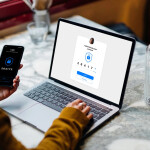Introduction
In this digital era, our personal and financial information is stored and transmitted online, making us vulnerable to various cybersecurity threats. This article aims to educate you about these threats and equip you with the knowledge to protect your digital identity effectively.
Understanding Cybersecurity Threats
Cybersecurity threats refer to malicious activities carried out by cybercriminals to gain unauthorized access to personal information, financial data, or disrupt digital systems. These threats include hacking, identity theft, malware, phishing attacks, ransomware, and more. Understanding the different types of threats is essential to implement the right security measures.
Importance of Protecting Your Digital Identity
Your digital identity is a collection of personal information that can be used to identify and target you online. Protecting it is crucial because a compromised digital identity can lead to financial loss, reputation damage, and even legal issues. By safeguarding your digital identity, you ensure a safer online experience and protect yourself from potential harm.
Common Cybersecurity Threats
- Hacking: Cybercriminals exploit vulnerabilities in computer systems or networks to gain unauthorized access and steal sensitive information.
- Identity Theft: This occurs when an attacker steals someone's personal information to impersonate them and commit fraudulent activities.
- Malware: Malicious software, such as viruses, worms, and trojans, is designed to damage or gain unauthorized access to a computer system.
- Phishing Attacks: Phishing emails, messages, or websites impersonate trusted entities to trick users into revealing sensitive information, such as login credentials or credit card details.
- Ransomware: This type of malware encrypts a user's data and demands a ransom for its release, posing a significant threat to individuals and businesses alike.
Password Security and Management
- Strong Passwords: Create unique, complex passwords using a combination of uppercase and lowercase letters, numbers, and special characters.
- Password Managers: Use a reputable password manager to securely store and generate strong passwords for different online accounts.
- Two-Factor Authentication: Enable two-factor authentication (2FA) wherever possible to add an extra layer of security to your accounts.
Two-Factor Authentication
- What is Two-Factor Authentication?: Two-factor authentication adds an additional step to the login process, requiring users to provide something they know (password) and something they have (a unique code or biometric data).
- Enabling Two-Factor Authentication: Activate 2FA on your online accounts, such as email, social media, and banking platforms, to enhance their security.
Secure Internet Browsing Practices
- Keep Software Updated: Regularly update your web browser and plugins to ensure you have the latest security patches.
- Use HTTPS: Look for the padlock symbol and "https" in the website's URL before entering any sensitive information.
- Be Wary of Suspicious Websites: Avoid clicking on unfamiliar links or downloading files from untrusted sources.
Email Security
- Avoid Suspicious Emails: Be cautious of unsolicited emails, especially those requesting personal information or containing suspicious attachments or links.
- Verify Email Senders: Double-check the email sender's address and any embedded URLs before interacting with the email.
Social Engineering Attacks
- Phishing Awareness: Be vigilant for phishing attempts and avoid providing personal or sensitive information through unsolicited phone calls, emails, or messages.
- Be Skeptical of Urgent Requests: Cybercriminals often create a sense of urgency to trick individuals into revealing confidential information. Verify the legitimacy of such requests through alternative means.
Mobile Device Security
- Use Passcodes or Biometric Authentication: Set a strong passcode or use biometric authentication (fingerprint or face recognition) to secure your mobile devices.
- Install Apps from Trusted Sources: Download apps only from official app stores to reduce the risk of installing malicious software.
Secure Wi-Fi Networks
- Use Encrypted Wi-Fi: Connect to secure and password-protected Wi-Fi networks that use encryption protocols like WPA2.
- Avoid Public Wi-Fi: Be cautious when using public Wi-Fi networks, as they may not be adequately secured.
Regular Software Updates
- Install Updates Promptly: Keep your operating system, antivirus software, and applications up to date to benefit from the latest security patches.
- Automatic Updates: Enable automatic updates whenever possible to ensure you receive critical security updates promptly.
Data Encryption
- Encrypt Sensitive Data: Utilize encryption tools or software to protect sensitive data stored on your devices or transmitted over networks.
- Cloud Storage Encryption: If using cloud storage services, choose providers that offer end-to-end encryption for your files.
Backup and Recovery Plans
- Regular Data Backups: Create regular backups of important files and store them securely offline or on a cloud backup service.
- Test Backup Restorations: Periodically test the restoration process to ensure your backups are functioning correctly.
Conclusion
In conclusion, understanding cybersecurity threats and implementing appropriate measures to protect your digital identity is vital in today's interconnected world. By following the tips provided in this article, such as practicing strong password management, enabling two-factor authentication, and adopting secure browsing habits, you can significantly reduce the risk of falling victim to cyberattacks.
FAQs
- Q: How often should I change my passwords?
A: It is recommended to change your passwords every 3 to 6 months or immediately if you suspect any compromise.
- Q: Can antivirus software protect against all types of cyber threats?
A: While antivirus software is essential for detecting and preventing many threats, it is not foolproof. It is crucial to adopt other security practices alongside using antivirus software.
- Q: What should I do if I suspect my digital identity has been compromised?
A: If you suspect your digital identity has been compromised, immediately change your passwords, monitor your financial accounts for any unauthorized activity, and report the incident to the appropriate authorities.
- Q: Are public Wi-Fi networks safe to use?
A: Public Wi-Fi networks can be risky as they are often unsecured. It is advisable to avoid accessing sensitive information or conducting financial transactions while connected to public Wi-Fi.
- Q: Why is it important to keep software updated?
A: Software updates often include security patches that address vulnerabilities. Keeping your software up to date ensures you have the latest protection against emerging threats.








